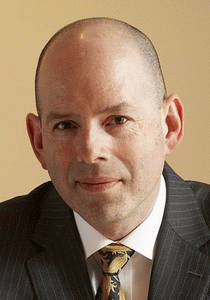
| Sources Directory A to Z Index Topic Index |
RSS |
Find Experts & Sources
FAQ
Membership Form Be an Affiliate Powerful Tools Tell your story Media Directory
Media Releases
Sources Bookshelf
Sources Newsstand
Subscriptions Connexions Radical Digressions Sources HotLink Sources Select Resources Twitter Download PDFs Contact
Media Resources
Releases Subject Index Releases List Event Calendar Submit a news release or Calendar event Include yourself in SOURCESFAQ
Membership Form Be an Affiliate Powerful Tools Tell your story Media Directory
Media Releases
Sources Bookshelf
Sources Newsstand
Subscriptions Connexions Radical Digressions Sources HotLink Sources Select Resources Twitter Download PDFs Contact
Media Releases from members of Sources.
To submit a news release, use this form.
To submit a news release, use this form.

Building a Better Landing Page: Where your click lands you
October 17, 2012
Toronto - 97% of Google's earned $37 Billion in 2011 was from advertising. Google's keyword-savvy Pay-per-click selling machine allows anyone to specify keywords, construct an ad, and specify how much they would pay for a click. Google then puts the ad on a web page that contains the keywords. When a user clicks, the advertiser pays, and Google benefits."The advertiser benefits as well," says Randall Craig, Web and Social Media Strategist, and author of the Online PR and Social Media series. "The user has made a commitment by clicking, and hopefully they will transact after they land on the target page. Unfortunately, the conversion to a sale does not happen as often as it should, because many advertisers are completely unaware of a simple concept called the 'landing page'."
A landing page is really just the other half of an advertisement. The ad sets up the requirement and helps people with a particular problem self-identify and click through. The landing page provides the solution, and a next step. It converts browsers into buyers. Randall Craig shares some of the key attributes of a landing page:
* It is paired with a very specific advertisement.
* The page should go through multiple rounds of A/B testing. (Two identical ads point to two different versions of the landing page; the one that converts fewer buyers should be discontinued; the other should be revised for a new test, etc.)
* Very little navigation to the main site; the goal is for them to read/consider/act - not to wander off.
* Simplified messaging, all designed to expose the problem and share the solution.
* Simplified design and graphics: because there is far less content and links than a traditional web page, the eye will naturally focus on the remaining important information.
* Multiple calls to action such as to Subscribe, Purchase, etc.
* Multiple content delivery modes - but identical message: Video, Descriptive Text, Testimonials, 'Trial' subscriptions, etc. Different people respond to different stimulus
* Consistent design beyond the landing page. Since the site is designed to convert, a vastly different look-and-feel beyond the landing page (e.g. the next page in a sequence) can cause user uncertainty, and possibly abandonment.
Adds Randall Craig: "The concept of a landing page can be generalized: there is a metaphorical landing page after everything that we write. What did you want people to do after they finished reading?" Think through the next step in any of the projects that you are working on, and start crafting the landing page. Think of it as a bridge to another decision. Once you've mapped out your decisions, it is vastly easier.
Since 1994, Randall Craig has been advising on web and social media strategy. He is the author of six books including the newly published Social Media for Business and the Online PR and Social Media series. For more information about Randall Craig visit www.randallcraig.com.
-30-
For more information contact:
Randall Craig
416.256.7773 x101 / Randall@108ideaspace.com
Carolyn Bergshoeff
416.256.7773 x 103 / Carolyn@108ideaspace.com
For more information contact:
Randall Craig
President
108 ideaspace inc.
Phone: 416-256-7773 x101
Email: Randall@108ideaspace.com
Website: www.RandallCraig.com
Click here to view our Sources Listing:
Randall Craig, Social Media and Networking Expert
Topics:
- Blogs/Blogging
- Business/Management Education
- Business Networking
- Career Planning
- Electronic Commerce/Business (E-Commerce/E-Business)
- Employee Engagement
- Employee Retention
- Entrepreneurs/Entrepreneurship
- Executive Coaching
- Human Resources Management Workshops & Seminars
- Internet
- Internet Consulting
- Internet/Lawyers
- Internet/Marketing
- Internet/Media
- Internet Risks
- Internet Strategy
- Knowledge Management
- Law Firm Consultants
- Legal Sector Consulting
- Management Consultants
- Management Training & Development
- Management Trends
- Management Workshops
- Marketing Communications
- Marketing Consultants
- Marketing/Internet
- Marketing/Professional Services
- Motivational Seminars
- Relationship Marketing
- Résumés
- Search Engine Optimization (SEO)
- Seminars & Workshops
- Social Media
- Social Networks/Social Networking
- Speaking/Professional
- Student Jobs/Work
- Training & Development
- Wellness at Work
